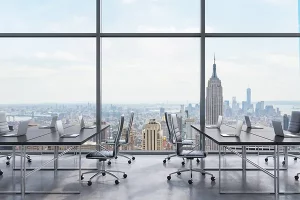Introduction The American office market stands on the precipice of significant challenges, with projections indicating a 20% plunge in value next year. In this article, we explore the factors contributing to this decline, analyze the implications for stakeholders, and discuss the strategies necessary for navigating the prolonged journey back to peak values in the evolving
Introduction
The American office market stands on the precipice of significant challenges, with projections indicating a 20% plunge in value next year. In this article, we explore the factors contributing to this decline, analyze the implications for stakeholders, and discuss the strategies necessary for navigating the prolonged journey back to peak values in the evolving landscape of the office real estate sector.
Unraveling the Factors Behind the Plunge
Dr. Rachel Harper, a seasoned commercial real estate market analyst, provides insights into the multifaceted factors contributing to the anticipated 20% plunge in America’s office market. This section explores the impacts of remote work trends, changing business models, and economic uncertainties on the valuation of office properties.
Implications for Stakeholders: Owners, Investors, and Tenants
The article delves into the implications for key stakeholders in the office market. Dr. Harper analyzes how property owners, investors, and tenants will be affected by the decline, examining the challenges and opportunities that arise in a market undergoing a significant valuation shift.
Prolonged Ascent: Decades to Reclaim Peak Values
Projections suggest a slow ascent for America’s office market, with decades needed to reclaim peak values. Dr. Harper explores the long-term trajectory and discusses the factors influencing the extended timeline for recovery. This section offers a realistic view of the challenges and adjustments required for sustained growth.

Image by: https://static .wix static.com
Informative Table: Key Factors Contributing to America’s Office Market Plunge
| Factors | Implications for Office Market Valuation |
|---|---|
| Remote Work Trends | Redefining the need for physical office space. |
| Changing Business Models | Impact on demand and utilization of commercial properties. |
| Economic Uncertainties | Influence on investor confidence and market stability. |
Adaptive Strategies for Stakeholders
As stakeholders confront the challenges, adaptive strategies become imperative. Dr. Harper provides insights into the strategies property owners, investors, and tenants can employ to navigate the evolving landscape. This section explores potential adjustments to leasing models, repurposing of office spaces, and embracing innovative solutions for sustained relevance.
The Evolving Role of the Office Space
The article concludes by examining the evolving role of office spaces in the post-plunge era. Dr. Harper explores how the definition of a workspace is transforming, emphasizing the need for flexibility, collaboration, and an enhanced focus on creating environments that cater to the evolving needs of businesses and their employees.
Conclusion
America’s office market faces a formidable challenge with a projected 20% plunge in value, signaling a transformative period for the sector. Dr. Rachel Harper’s expertise sheds light on the factors contributing to this decline, the implications for stakeholders, and the adaptive strategies required to navigate the prolonged journey back to peak values. As the office real estate landscape evolves, stakeholders are encouraged to embrace innovation, flexibility, and strategic planning to thrive in a market reshaped by remote work trends and changing business dynamics.

















Leave a Comment
Your email address will not be published. Required fields are marked with *